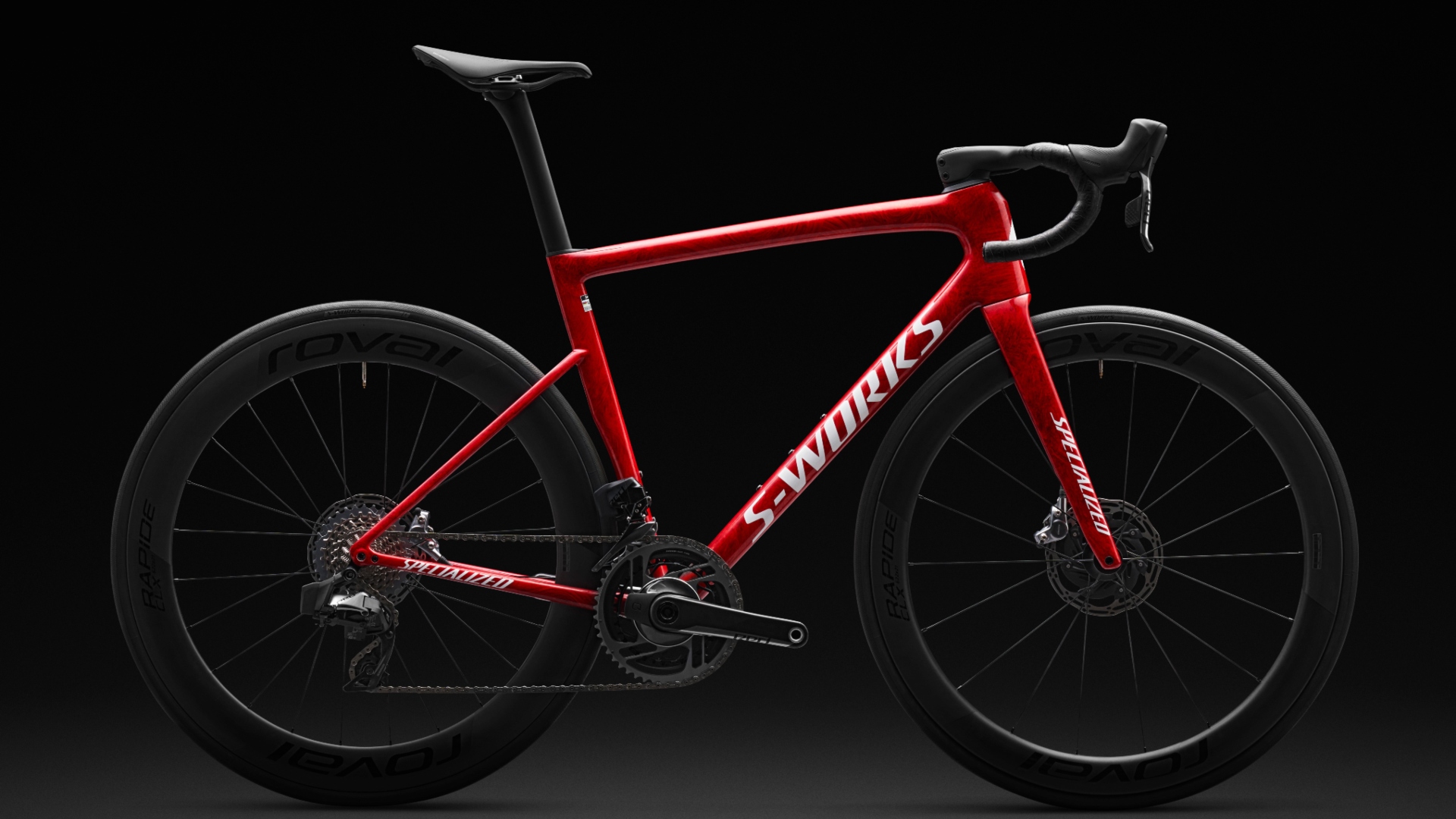
After months of speculation, a mysterious no-show at the Tour de France, and some possible sightings in the last few weeks, Specialized finally launched what is perhaps one of the most hyped releases of 2023 - the S-Works Tarmac SL8.
Specialized hasn’t been shy with its claims either - tagging the Tarmac SL8 as the "fastest race bike in the world" - not unlike BMC back in May last year - along with declarations of decreased weight and improved aerodynamics. Given these claims, and the fact that the SL7 is regarded as one of the best aero bikes, the latest iteration has plenty to live up to - so let's go ahead and break down the jargon.
Specialized Tarmac SL8: Venge at the front, Aethos at the back
Take one glance at the new Specialized Tarmac SL8 and you'd be forgiven for questioning exactly how much has changed since the last iteration released back in 2020.
However, closer inspection reveals plenty more refinement to the new frame, and the eagle-eyed amongst you will have picked out some pretty strong hereditary features too.
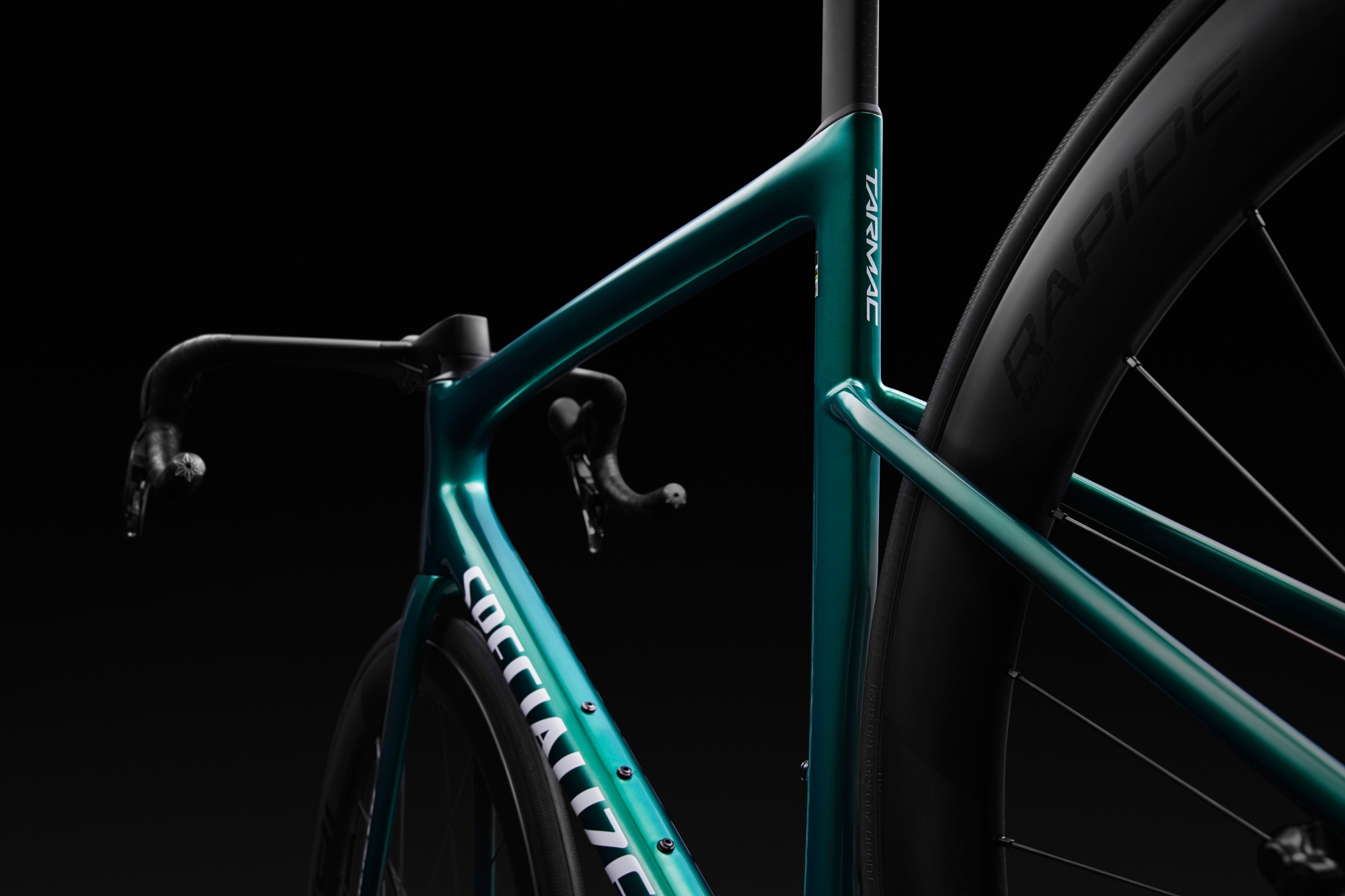
Draw a line from halfway along the top tube to the top of the S-Works logo on the down tube, and this bike is pretty much an Aethos (Specialized's lightest ever road bike) behind the line, and a Venge (Specialized's retired aero race bike) in front.
The headline statistics are a 685 gram frameset, 16.6 seconds quicker over 40km, and a 33% stiffness-to-weight ratio increase, all coupled with a reported 6% smoother ride quality. So, the marketing 'top trumps' for modern race bikes are well and truly ticked off, but that's not a surprise, is it?
Specialized Tarmac SL8: Aerodynamics
Specialized has opted for a new strategy when it comes to aerodynamic optimization. The brand says it is "putting aero where it matters, not just where it looks good".
You'd be forgiven for hoping this had always been the approach, of course - but that statement certainly appears backed up by the biggest visual change on the new race bike - the head tube. Now narrower, the new profile is deeper and protrudes slightly beyond the fork blade, similar to that of the Cannondale System Six. As well, the fork blade itself is more extruded, with an aim to smooth airflow at the front of the bike, just like the now-extinct Venge.
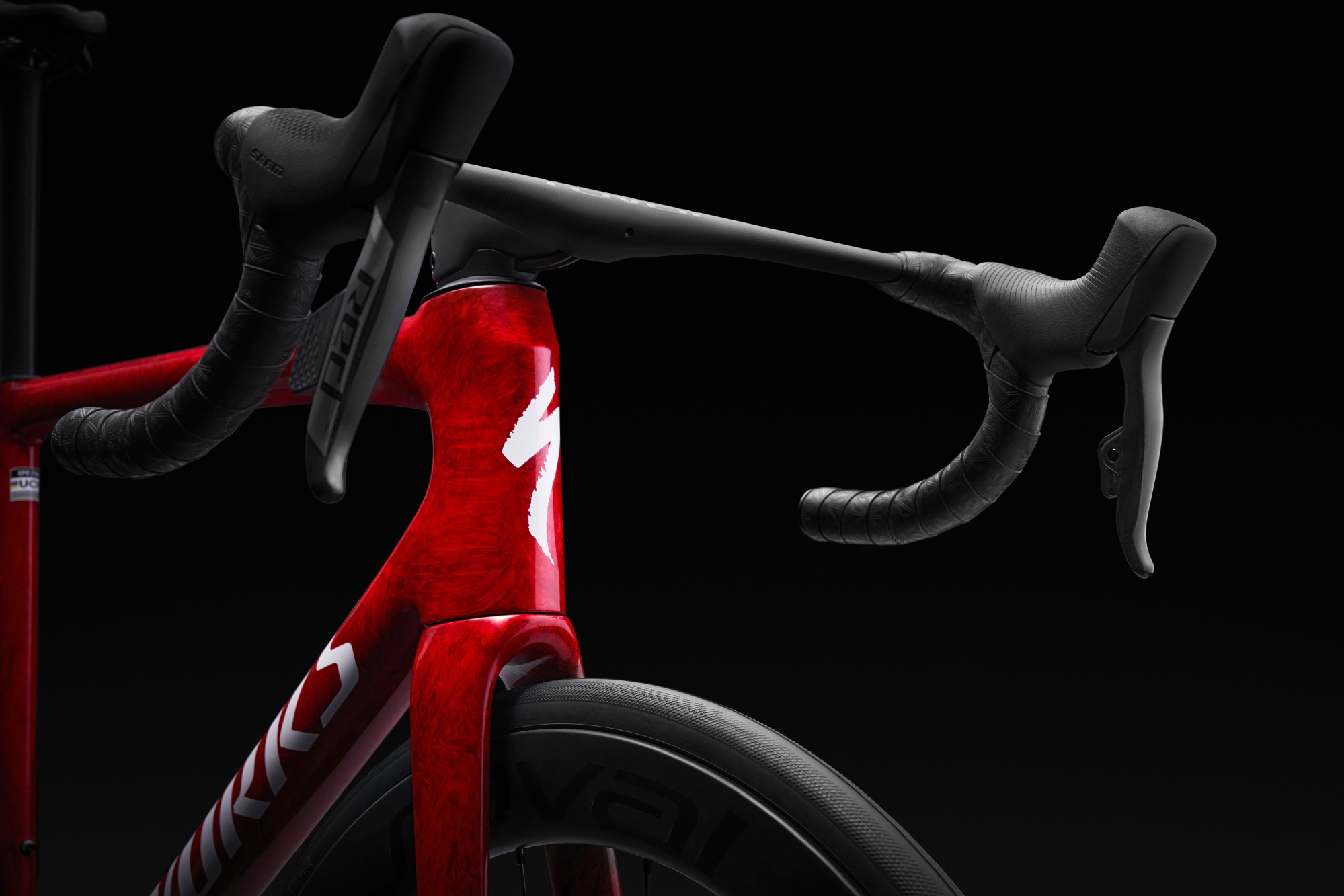
Models specced with the new integrated Roval Rapide aero cockpit, which was released before the Tour de France, will also benefit from a claimed four watt saving gained from a revised handlebar profile.
The down tube, seat tube, and seat post have all been refined too, looking much more dainty in their construction. Specialized says this bike is more aerodynamic than the Venge, even with the narrower frame profiles. Specialized has said that “a deep airfoil down tube and seat tube may look aero, but due to the dirty air they sit in, they create vanishingly small aero gains, but impact weight and ride quality significantly".
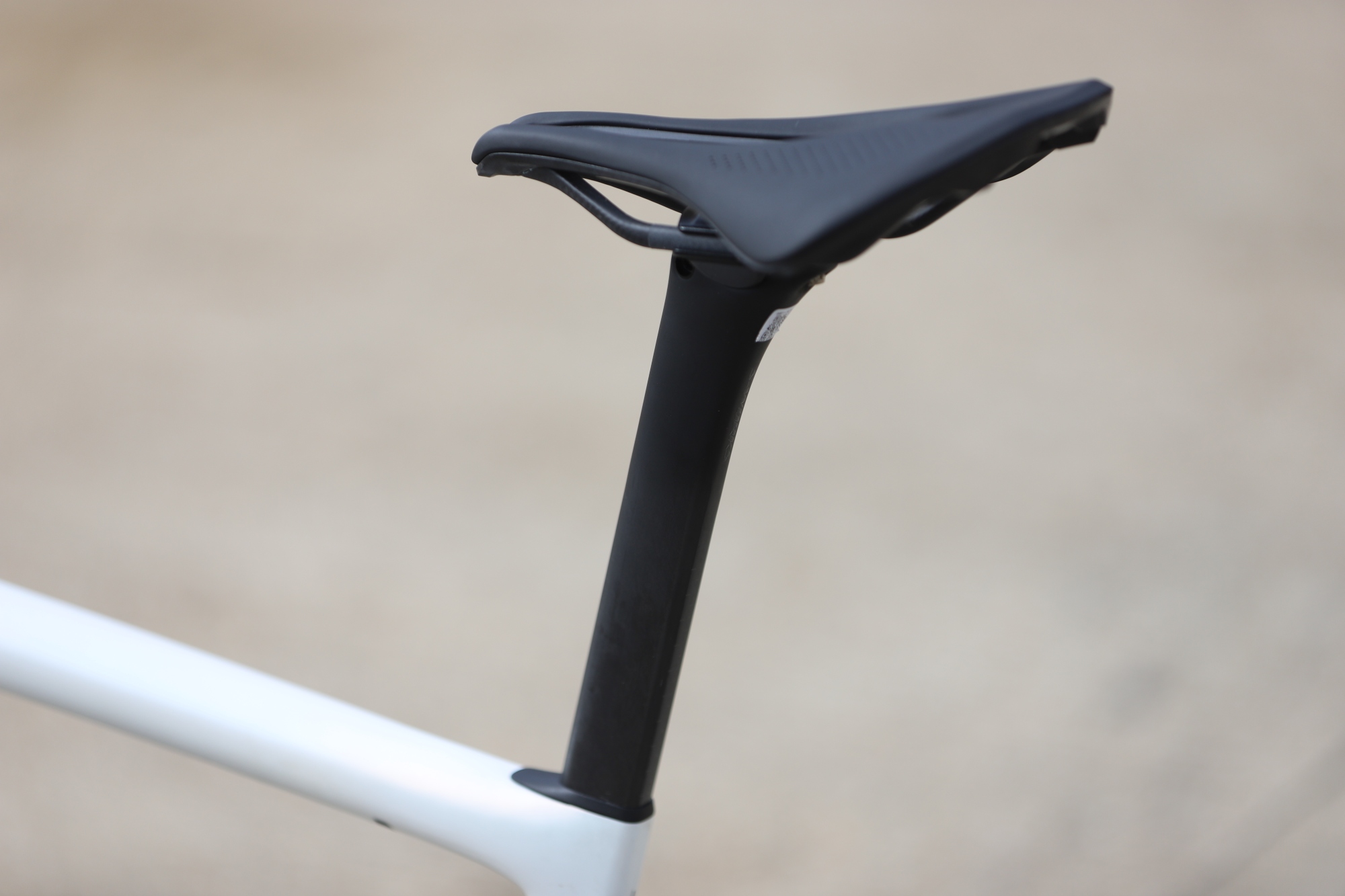
Also, in shrinking the seat tube, Specialized has managed to do the same to the seat post. It's now narrower than the Venge's seat post, and less deep back to front than the seat post on the outgoing Tarmac SL7. Specialized claims this is the most aero seat post it has ever made, while weighing less than the one found on the SL7.
Specialized Tarmac SL8: Reduced weight
The smaller tube shapes that can be found towards the rear of the bike have in many cases also been re-engineered to save weight, which brings us nicely to the most tangible change to the new S-Works race machine - its mass.
The new frameset has a feathery claimed weight of 685 grams for a size 56, which is a 115 gram saving over the SL7. This has been made possible by putting the frame on a serious diet, especially at the rear of the bike. Alongside the aforementioned seat tube size reduction, the bottom bracket, chain stays and seat stays have all shrunken in size.
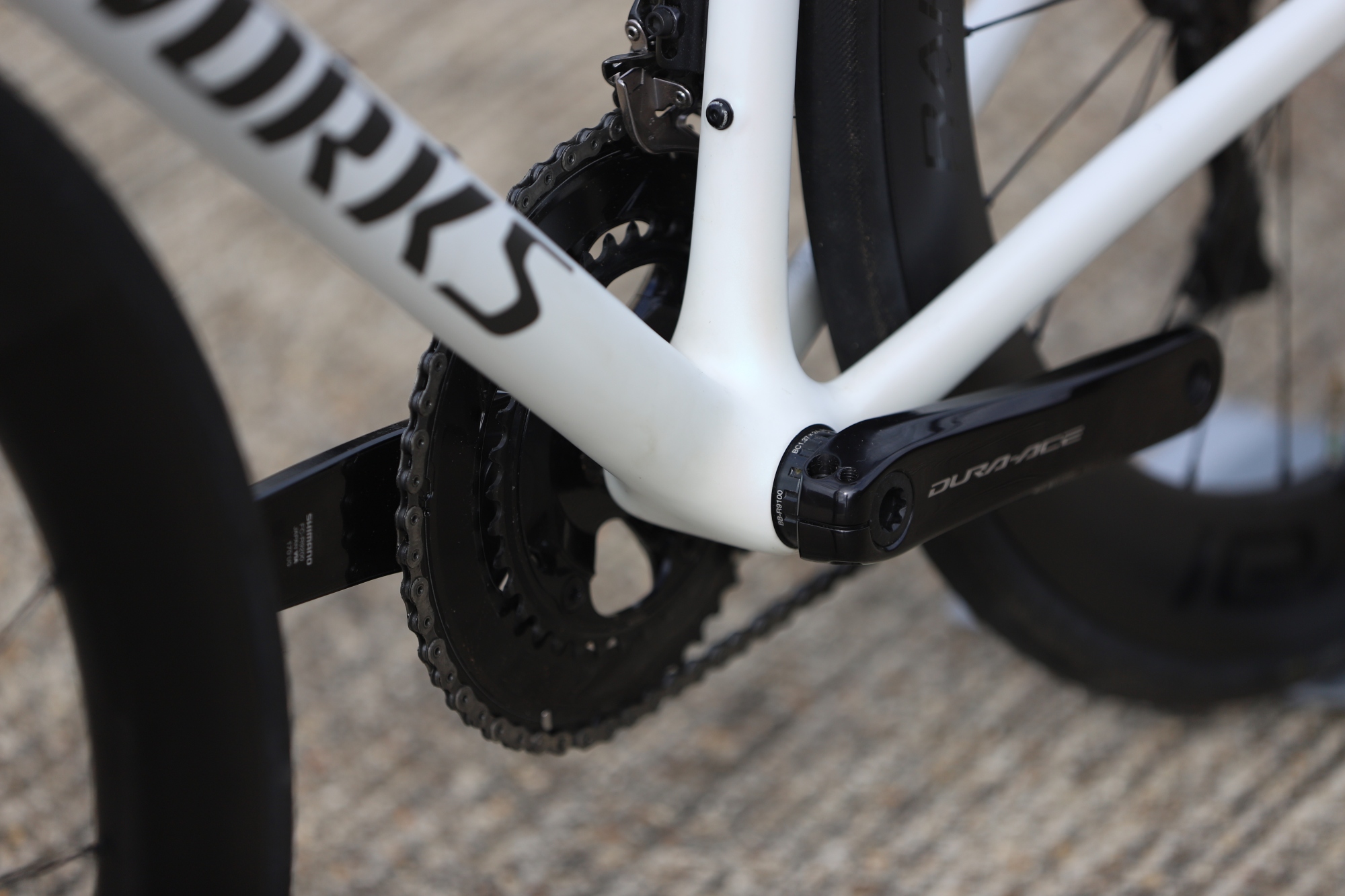
What immediately springs to mind when removing so much material is the potential for decreased stiffness, but Specialized claims this is not the case. After applying the same FACT 12r carbon layup as used on the Aethos to the frame of the SL8, Specialized then braced the frame to improve head tube and bottom bracket stiffness. The result, it claims, is a 33% stiffness to weight ratio increase, which should please the likes of pros like Soudal-Quick-Step's Fabio Jakobsen when undertaking one of his race winning sprints. Such a stiffness increase leads us to wonder if the new frameset will be so appealing for amateur riders, putting out less power and searching for comfort, but apparently, that's been considered too...
Specialized Tarmac SL8: ride quality
Specialized is also claiming that the frame's slighter rear end has allowed for a 6% improvement to the SL8's compliance - though exactly how this is measured hasn’t been confirmed.
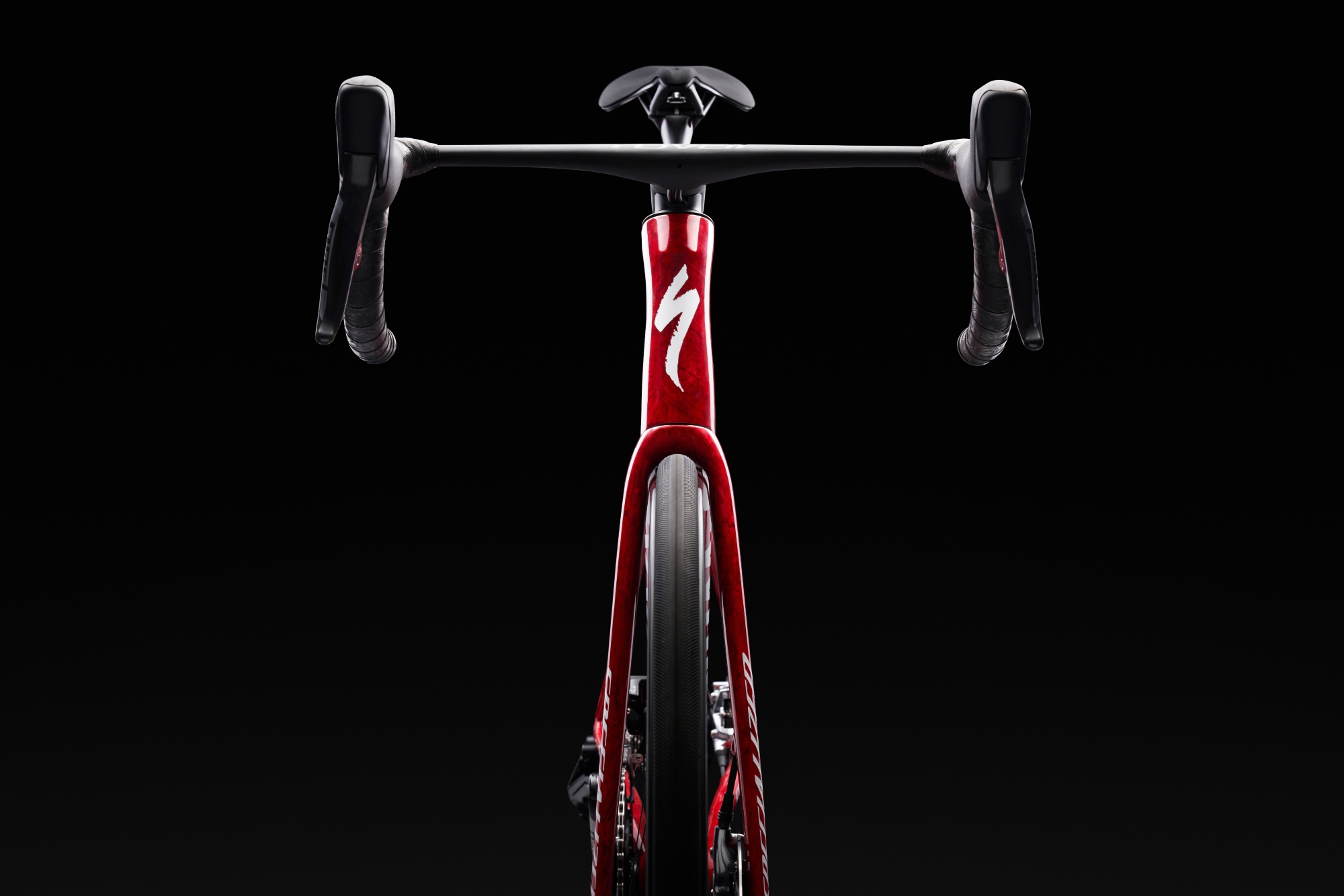
Also on the topic of comfort, the Specialized Tarmac SL8 has clearance for 32mm tires, and as it ships with 26mm rubber, which is on the narrow side by today's standards, this could be an easy win for those looking to gain some added comfort.
Specialized Tarmac SL8: specs and pricing
The S-Works model, which includes Shimano Dura-Ace Di2 with a 4iiii dual sided power meter and Roval Rapide CLX II wheels retails at $14,000 / £12,000.
The S-Works bike is also offered with SRAM Red AXS with a dual sided Quarq power meter for the same price. Yes, it's still an extremely pricey machine. However, in the UK the SL8 is actually up to £1950 less expensive than the outgoing SL7 range topper.
The Pro model features Shimano's Ultegra Di2 W/4iiii power meter or Sram Force AXS W/Quarq power meter. Both use Roval Rapide CL wheels and cost $8,500 / £8,000.
The Expert model comes equipped with SRAM Rival AXS with power meter and set of Roval C38 wheels. It retails for $6,500 / £6,000.
Both the S-Works and the Pro are offered as framesets only, priced at $5,500 / £4,750 and $3,500 / £3,000 respectively.
You can read our first ride impressions of the Specialized Tarmac SL8 here.
For more information visit specialized.com







